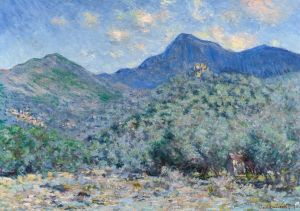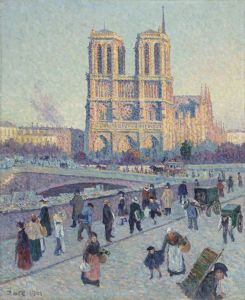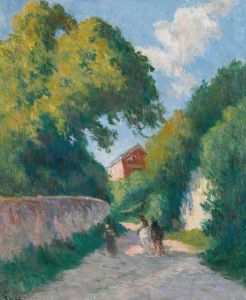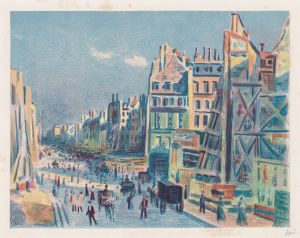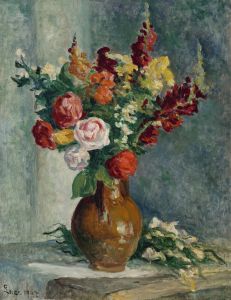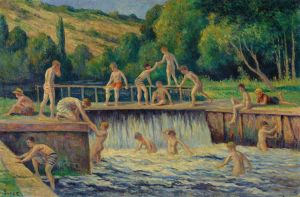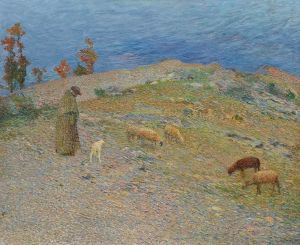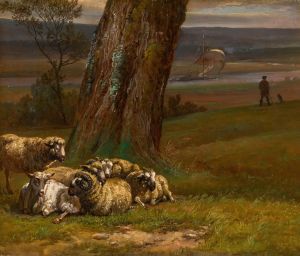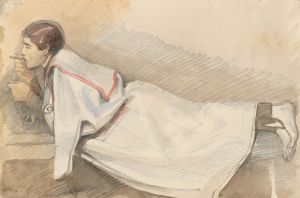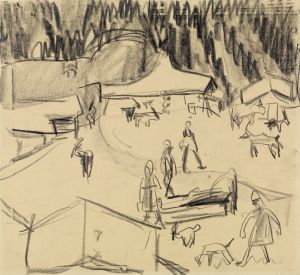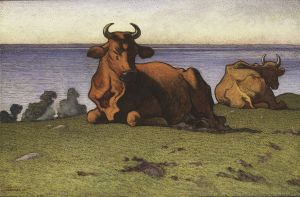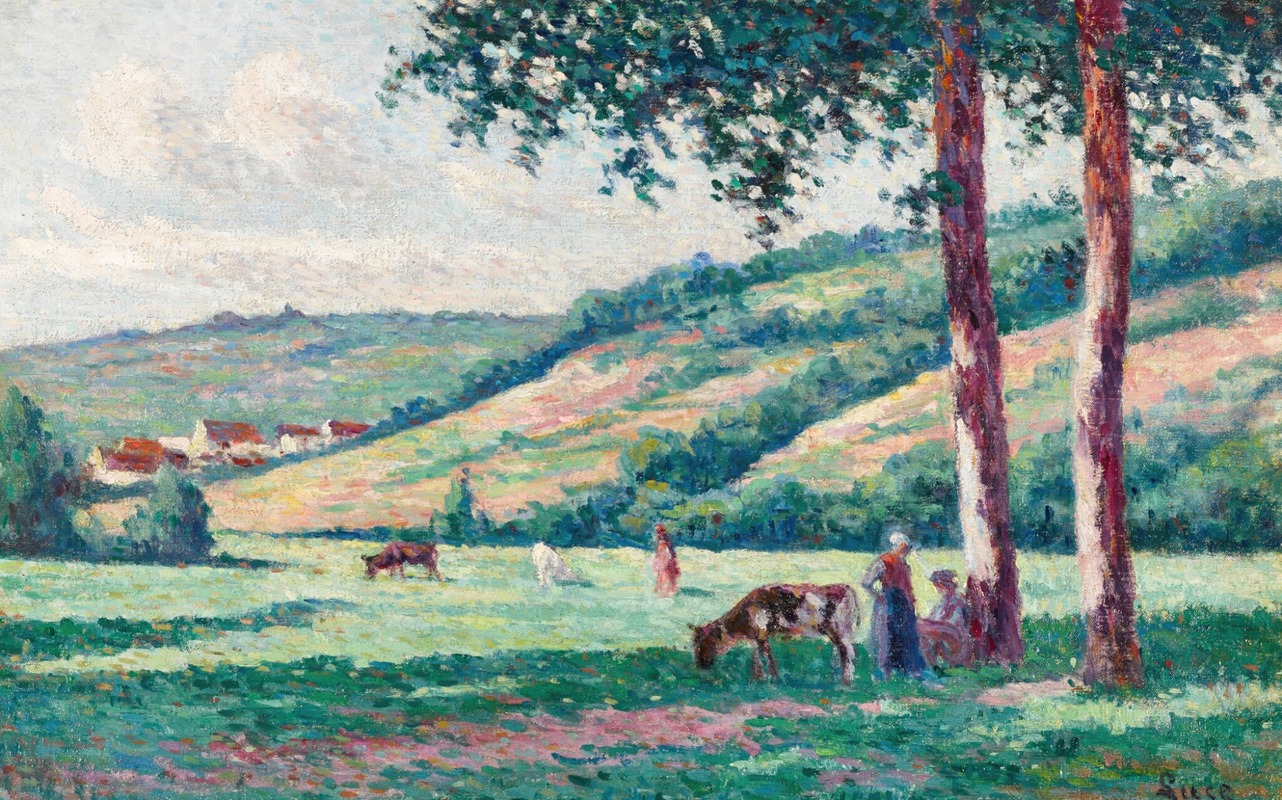
Paysage aux bergères et vachers
A hand-painted replica of Maximilien Luce’s masterpiece Paysage aux bergères et vachers, meticulously crafted by professional artists to capture the true essence of the original. Each piece is created with museum-quality canvas and rare mineral pigments, carefully painted by experienced artists with delicate brushstrokes and rich, layered colors to perfectly recreate the texture of the original artwork. Unlike machine-printed reproductions, this hand-painted version brings the painting to life, infused with the artist’s emotions and skill in every stroke. Whether for personal collection or home decoration, it instantly elevates the artistic atmosphere of any space.
Maximilien Luce was a French Neo-Impressionist painter known for his contributions to the Pointillist movement, a technique characterized by the application of small, distinct dots of color to form an image. One of his notable works is "Paysage aux bergères et vachers," which translates to "Landscape with Shepherdesses and Cowherds." This painting exemplifies Luce's skill in capturing rural scenes with a vibrant palette and meticulous attention to detail.
Born in Paris in 1858, Luce initially trained as an engraver before turning to painting. He became associated with the Neo-Impressionists, a group of artists who expanded upon the Impressionist movement by employing scientific theories of color and optics. Luce was particularly influenced by Georges Seurat and Paul Signac, pioneers of Pointillism. This technique is evident in "Paysage aux bergères et vachers," where Luce uses small, precise brushstrokes to create a harmonious and luminous landscape.
The painting depicts a serene rural setting, featuring shepherdesses and cowherds tending to their flocks. Luce's choice of subject matter reflects his interest in the everyday lives of working people and the beauty of the natural world. The composition is balanced and tranquil, with figures integrated seamlessly into the landscape. The use of light and color is particularly striking, as Luce employs a range of hues to capture the changing effects of sunlight on the scene.
Luce's work often conveyed a sense of social consciousness, and "Paysage aux bergères et vachers" is no exception. By portraying rural laborers in a dignified manner, he highlights the importance and value of their work. This theme is consistent with Luce's broader artistic philosophy, which sought to elevate the status of ordinary people through art.
Throughout his career, Luce remained committed to the principles of Neo-Impressionism, even as other artists moved away from the style. His dedication to the technique and its underlying theories is evident in the meticulous execution of "Paysage aux bergères et vachers." The painting demonstrates his mastery of color harmony and composition, as well as his ability to convey mood and atmosphere through the careful arrangement of elements within the scene.
Luce's contributions to the art world extend beyond his paintings. He was also an active member of the artistic community, participating in exhibitions and engaging with other artists and intellectuals of his time. His work was exhibited in several prominent venues, including the Salon des Indépendants, where he gained recognition for his innovative approach to painting.
Today, Maximilien Luce is remembered as a key figure in the Neo-Impressionist movement, and "Paysage aux bergères et vachers" remains an important example of his artistic legacy. The painting is celebrated for its technical precision, vibrant color palette, and the way it captures the essence of rural life. Luce's ability to blend social commentary with aesthetic beauty makes this work a significant contribution to the history of art.
In summary, "Paysage aux bergères et vachers" by Maximilien Luce is a testament to the artist's skill and vision. Through his use of Pointillism, Luce creates a vivid and harmonious depiction of rural life, highlighting the dignity of labor and the beauty of the natural world. The painting stands as a lasting tribute to Luce's commitment to the ideals of Neo-Impressionism and his enduring influence on the art world.






